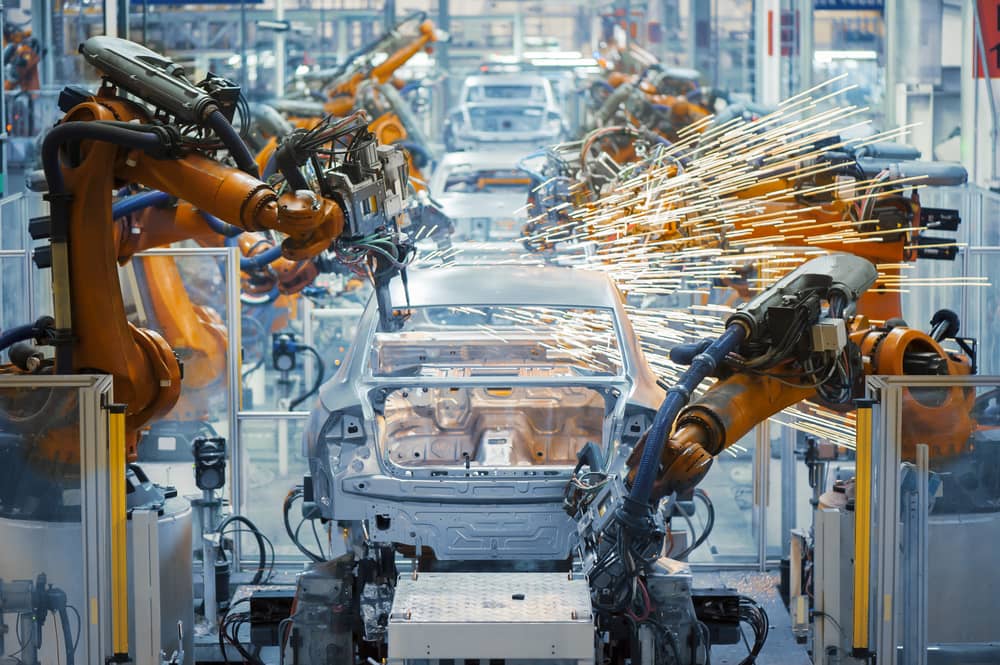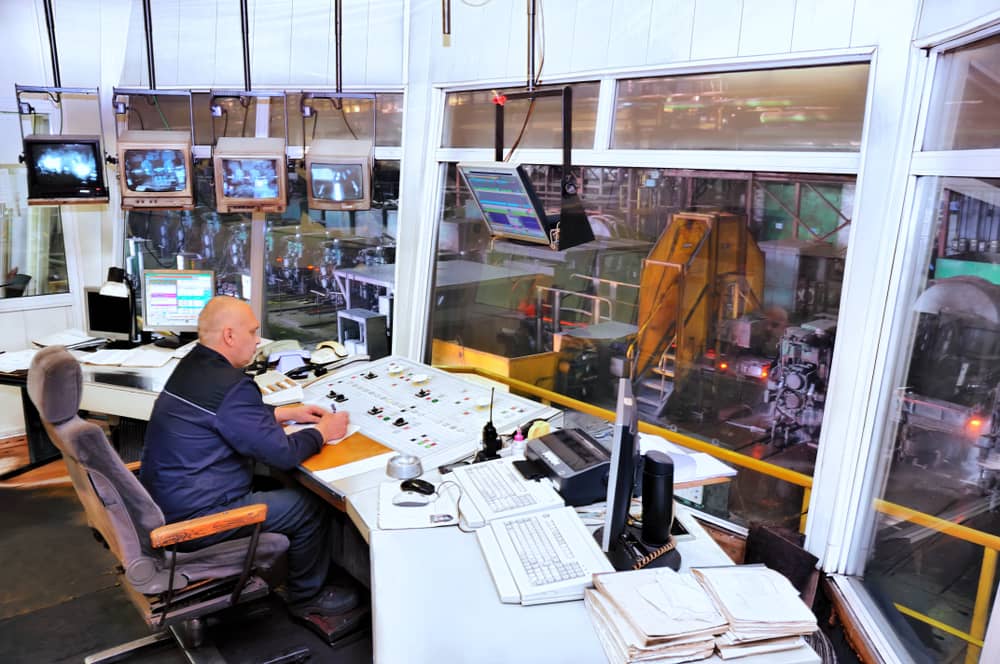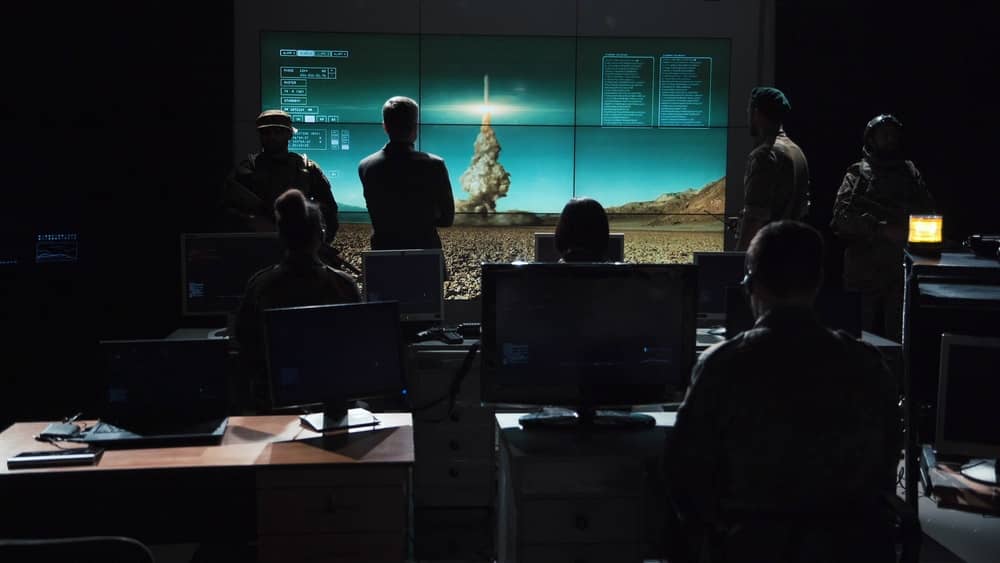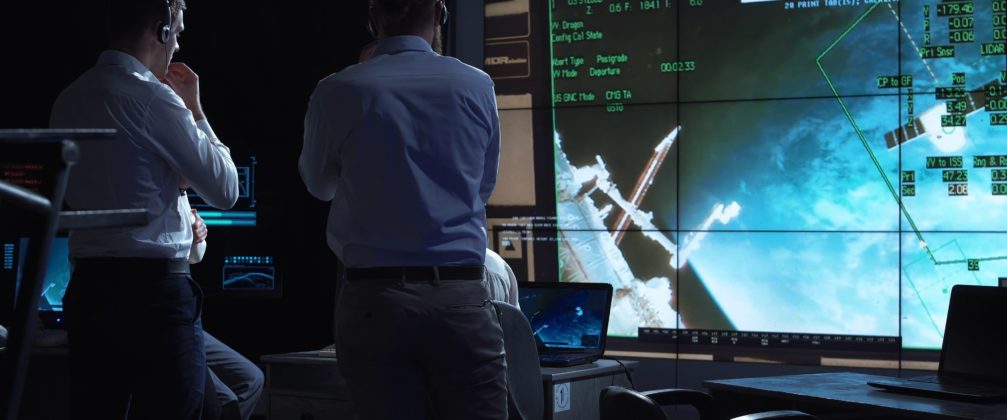Control rooms and command centers are continuously evolving and adapting to support the needs of modern organizations. From utilities and transportation to public safety and security, there’s always something new on the horizon. In this blog, we’ll provide an overview of control room trends for 2022 to give you a comprehensive understanding of control rooms of the future.
1. Enhanced Cybersecurity in Control Rooms
As an increasing number of products require network access, information technology (IT) teams are taking more responsibility for implementing and managing audio/visual (A/V) solutions. These new products include applications, devices, content management systems, access points, and more. As a result, cybersecurity in control rooms has come to the forefront for many organizations.
However, the rise of additional network-connected control rooms – in addition to remote information access and content sharing – can make cybersecurity a significant challenge. Hackers and cyber criminals continue to evolve their strategies, and cybersecurity practices must adapt alongside them.
To mitigate these ever-present threats, organizations are incorporating more on-site IT support, scalable software, and intuitive graphical user interfaces (GUIs). All of these tools help operators detect and mitigate cybersecurity threats as quickly and efficiently as possible.
2. Rise in Control Room Decentralization & Remote Work
Unlike the traditional hub-and-spoke system, new control rooms are equipped with innovative software that facilitates effective communication and collaboration across several locations. This allows operators to easily interface with local and remote coworkers, operational and field response teams and supervisors.
New control room management software incorporates a variety of collaborative, enterprise-grade features that support all of your operators, no matter their physical location. Along with a comprehensive video wall system, remote operators can still view and manage content across a shared dashboard. Additionally, local asset management significantly improves your organization’s data processing speeds.
Decentralization is particularly beneficial for utilities because it offers custom design configurations and closer proximity to data sources. This improves your operators’ situational awareness, allows you to control back-up and redundancy, and provides field-based information for better decision making.
Much of the decentralization that has occurred since early 2020 is a result of operators populating both primary and backup spaces simultaneously. This shift was designed to reduce the number of staff in one building and avoid the operational impact of an entire team being infected with COVID-19.

3. More Industrial Internet of Things (IIoT) Data Sources
The role played by the industrial Internet of things (IIoT) continues to grow within many sectors, including utilities. Organizations are harnessing the power of smart machines and real-time data, enabling them to quickly identify problems and inefficiencies, which saves both time and money.
For example, electric utilities are implementing smart technology into transmission and distribution lines to quickly identify faults and reduce the likelihood of outages. Smart data sources – like sensors and actuators – have a variety of other benefits, including:
- Using predictive analytics to identify system failures before they happen.
- Reducing overall expenses by analyzing historical data and business intelligence.
- Keeping workers and end-users safe by warning them before a dangerous event occurs.
IIoT for Safety Operations Centers (SOCs) & Network Operations Centers (NOCs)
The IIoT also has a variety of benefits for security operations centers (SOCs) and network operations centers (NOCs). SOCs are tasked with detecting, analyzing, preventing, and responding to cybersecurity threats. And NOCs house IT technicians who oversee remote monitoring and management (RMM) software.
Ultimately, the industrial Internet of things makes it easier for SOCs and NOCs to remotely monitor data and manage assets, improving overall cybersecurity for countless organizations.
4. Greater Use of Machine Learning & Artificial Intelligence
As the amount of big data continues to increase, so has the demand for workflow software to manage and analyze that information. Control rooms have begun utilizing artificial intelligence (AI) and machine learning to support decision making and implement risk control, reducing the need for human intervention.
Machine learning allows smart devices to use past experiences to make informed decisions in real-time. This supports the functioning of AI, which recreates the reasoning and thought processes of operators to perform tasks requiring human intelligence. However, these technologies aren’t making fully-automated decisions yet, so operators take over in crisis situations.
Regardless, learning through experience allows smart machines to analyze vast amounts of data and increase positive outcomes. They can also alert operators to irregularities, reducing the need for continuous monitoring and allowing humans more proactivity in time-sensitive situations.

5. Heavier Focus On Control Room Management Software
While past audio/visual devices were built using specialized or proprietary hardware, software is now significantly increasing return on investment in control room environments. These programs quickly analyze big data, identify potential issues, and recommend solutions for operator review. In other words, control room management software adapts to user needs in ways that single, hardware-based controllers can’t.
As competition increases, control room technology manufacturers and design consultants are creating solutions that work in tandem with one another. As network demands become increasingly complicated, organizations expect open-source software solutions to integrate seamlessly.
6. Proliferation of Critical Operations Centers
Significant technological advancements are expected to increase the number of critical operations centers within corporate, healthcare, and industrial settings. These technologies are cost-effective, multi-functional, and accessible to everyone at your organization.
Critical operations centers are designed for surveillance, network monitoring, asset and process management, risk assessment, and personnel management. They typically include (but are not limited to) the following technologies:
- Software solutions that facilitate communication between operators and management.
- Large-screen visualization technologies that provide comprehensive situational awareness.
- Media platforms that allow operators to manage a wide variety of content.
7. Enhanced Capabilities Within Process Control Rooms
The capabilities of – and role played by – process control rooms is also expected to increase in the future. These spaces contain operators who monitor a facility’s technical and industrial processes while also focusing on cybersecurity. Many process control centers house large equipment (e.g. oversized servers, computers, and monitors) that visually represent your organization’s processes.

8. More Efficient Big Data Processing & Management Systems
Control rooms are receiving increasingly large amounts of information from a variety of sources, making data management and analysis more important than ever. Big data improves situational awareness and decision making, but it must be interpreted in near real-time to provide value for operators.
Big data sources include industrial sensors, mobile devices, drones, robots, video, network equipment, applications, Internet data, TV, and social media. In most cases, organizations use storage area networks (SANs) and media asset management (MAM) software to maintain all of the valuable information that enters their control room.
9. Popularity of LED Video Wall Control Software
In the past, organizations were hesitant to install light-emitting diode (LED) video walls due to limited pixel pitch. Similarly, previous LED video walls didn’t provide enough resolution in comparison to liquid crystal display (LCD) products of the same size.
However, the advent of mini- and micro-LED displays has created significantly higher pixel densities. Additionally, LED technologies offer longer lifespans than their LCD counterparts, and there are no seams (known as bezels) in the display canvas.
Here are a few other examples of why LED video walls are becoming increasingly popular in control room environments:
- Offer up to 8K resolutions or more when integrated into your system.
- Screens can be arranged and molded into unconventional shapes, such as curved walls.
- Most convenient option in terms of serviceability.
- Don’t take up as much space as traditional projection systems.
- Operate effectively in well-lit environments, so you can use them in rooms with windows or other bright light sources.
- Ability to display extremely vivid imagery through the incorporation of high-dynamic-range (HDR) and quantum dot display (QLED).
Now that you’ve learned about control rooms of the future, it’s time to update your current space or design a new one from the ground up. Our experienced consultants are here to help you incorporate all of the latest trends and technologies to create a control room that supports your needs. Contact us today to get the conversation started.
This blog was originally published on 12/15/19 and updated on 12/15/21.

